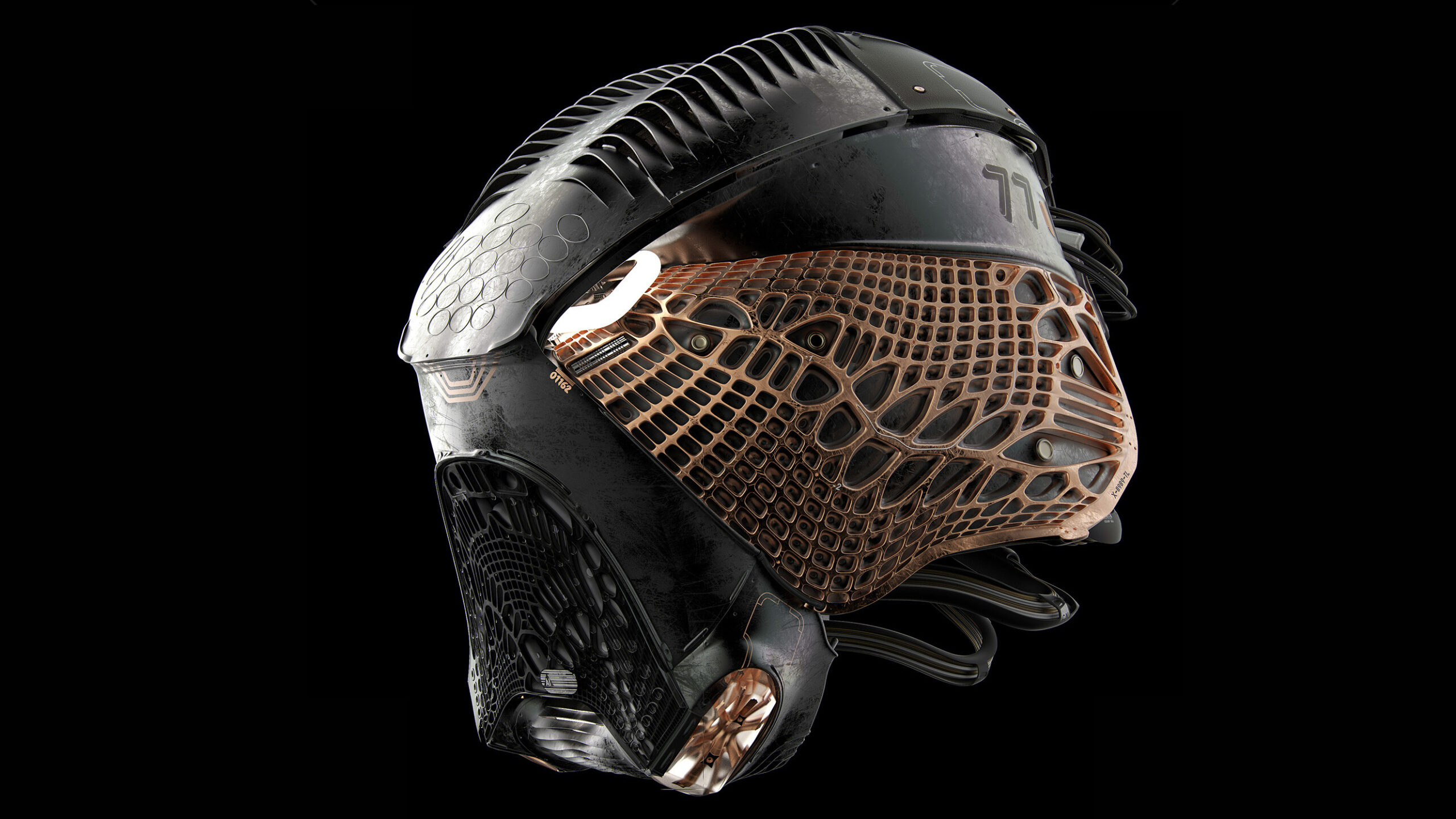When you grow up with so many sources of inspiration, there’s no telling where it will lead you. Lee Souder was inspired by his parents to create, driven to study Industrial Design, and eventually discovered his passion in Entertainment Design. His unique style was developed throughout those years, integrating different design disciplines and constantly pushing himself to create. Here, he tells us more about his start, his struggles, how he approaches a project and why KeyShot is such an important part of his process.

Website: Artstation
What sparked your interest in Industrial Design and lead you to work as an Environment Artist?
As a child my mother was studying Interior Design and she would bring home all these neat dioramas. Both of my parents inspired me to create. My father had a metal shop at his roofing business for custom fabrication. I wanted to use his tools and help build but I was too young. So I stuck to kit-bashing Lego kits. As a teen, I discovered what Industrial Design was from Time magazine. After seeing RISD’s Industrial Design facility I knew RISD was for me. RISD left me with this burning desire to always stay curious and create. While working at Reebok I came across the work of Scott Robertson. His work encouraged me to focus on Entertainment Design.
 What was the turning point in your career?
What was the turning point in your career?
Since I couldn’t find Entertainment Design type of work in Philly I relocated to LA with a friend. I cut the cord and threw myself into the fire to find design work. After a stressful year, I finally secured a job in the game industry as a General Artist. After 4 years at a game company, I felt set and comfortable. But sadly Pandemic Studios laid off everyone during the recession. I couldn’t find work for six months which left me depressed. But I worked on my portfolio all day and night until I found work. Since that debacle, whenever there is free time, I experiment with 3D modeling and add these explorations to my kit-bash library.
What is unique about your approach to a project?
My curiosity and passion for 3D art/design have gotten me to where I am today. My ultimate goal is to create something fresh. Since this is very difficult, it’s also extremely exciting, which motivates me. To achieve this I cross-pollinate different software. I also like throw different design disciplines into the mix, such as Apparel Design and Architecture. When I begin a project I throw down every crazy idea on the canvas then deduct from there. Kit-bashing is a big part of my process too. I use kit-bash parts as primitives to swiftly start on an idea.
What 3D modeling software do you use?
I use Maya for most of my production because it’s easy to configure with hotkeys and shortcuts. It’s what I have been using for the last 10 years and nothing has come along to take me away. Before executing with Maya I used ZBrush to sketch and find answers. Recently I went back to Rhinoceros for precision and product design projects. In addition, Rhino has a plugin called Grasshopper3d which I use for efficiency and ultra detail.
Where in the process do you use KeyShot?
I use KeyShot throughout the whole process, from experimenting and rendering sketch models to final compositions. Furthermore, KeyShot is a great way to find the perfect lighting rig with HDRI maps.
What makes KeyShot an important tool to have?
When designing, I need 3D explorations to be rendered instantly. KeyShot makes this possible and, thanks to the Material Graph, I spend less time in other texture authoring tools. Luxion is continually improving it with a workflow and interface so thought out a caveman could pick it up in 10 minutes.
What advice would you give to someone interested in doing what you do?
A well thought-out design process is the most important asset to have. Think of it as a formula that will solve any design problem. Also, save time for experimental art and curiosity at home; cross-pollinate, and organize your assets. When I’m tired, I create random 3D art, and these random pieces are saved and used accordingly to fill in gaps with other projects.
To stand out, develop a recognizable style. This can be achieved by having fun with whatever you’re developing. Focus on what you care about and love. If you are having trouble developing a style, model objects from reality and tweak them a bit.
I also suggesting learning to build a PC and get a new one every four years. This will save time and money especially if something breaks or fries. The employers who are hiring were in your shoes at one point so you cannot fool them. Make sure anything you create is done with maximum effort. Then potential employers and clients can tell you work hard. Now stop listening to me and make something EPIC. Don’t worry, KeyShot will quickly render all that epic detail for you!






